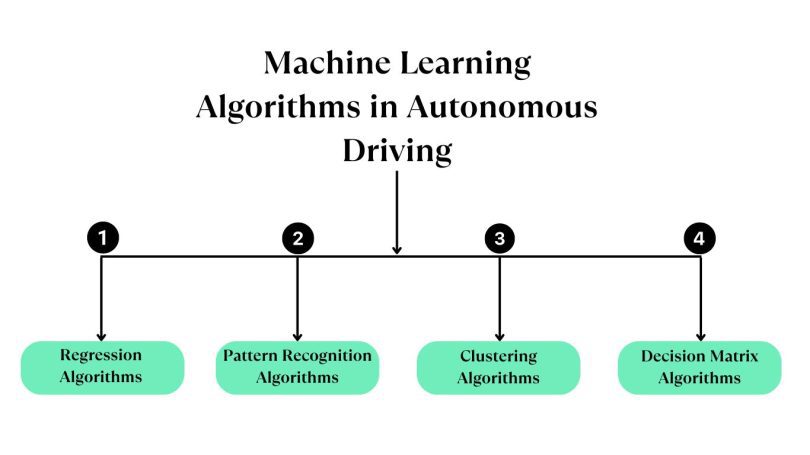Self-driven cars are closely related to the Industrial Internet of Things concept.
One of the questions arising in the presence of such vehicles is how they work independently without the need for a driver.
The present-day vehicles include numerous sensors, actuators, and controllers in the form of software on function-oriented ECUs. In this case, machine learning software is a critical component.
Importance of ML in Self-Driving Cars:
Self-driving cars are impossible without machine learning as the car and its environment are read and predicted on the go.
The tasks related to machine learning in autonomous vehicles are mainly categorized into four areas. These include approaches based on objects such as detecting objects, recognizing or identifying objects, classifying objects, and predicting object movement and localization.
Machine learning algorithms are categorized in various ways based on their nature.
Machine Learning Algorithms Categorization:
- “Regression Algorithms”
- “Pattern Recognition Algorithms”
- “Clustering Algorithms”
- “Decision Matrix Algorithms”
“Regression Algorithms”:
While discussing Advanced Driver-Assistance Systems (ADAS), localization and actuation require images from radar or cameras. The biggest issue is how to train models that can make predictions based on images and select relevant features. Some regression algorithms relevant to self-driving cars include Bayesian regression, neural network regression and decision forest regression.
Pattern Recognition Algorithms:
In ADAS, images acquired by sensors encompass a wide range of environmental information that should be filtered to identify object instances while excluding other environmental information. Pattern recognition algorithms work very well in filtering out the outliers and are obligatory for the data set reduction before the object classification. These algorithms provide a simplified data set of the object by detecting the edges of the objects and approximating these edges using line segments (polylines) and circular arcs.
The recognition algorithms used in ADAS include Support Vector Machines with Histogram of Oriented Gradients, Principal Component Analysis, Bayes Decision Rule, and K nearest Neighbour algorithms.
Clustering Algorithms:
Unfortunately, many system-acquired images are ambiguous, and the objects themselves can also be obscure in terms of position. The objects could not be recognized and classified by classification algorithms because of low-quality images or if there are few training data points. Cluster algorithms are useful in identifying structures in the data points where the data is divided into groups so that the constituent data points are as similar as possible according to the inherent structures. The most used clustering techniques are the K-means and multi-class neural nets.
Decision Matrix Algorithms:
Such algorithms pursue the process of constant identification, evaluation and ranking of the performance of pairs of values and information mainly utilized in decision making. For instance, whether a car should make a left turn or apply brakes relies on the amount of confidence that the algorithms have in the features that are intended to classify, recognize and provide a predictive judgment for the next move of the objects. The decision matrix algorithm is made of several decision models that were trained separately and their outputs are summed up to enhance the prediction accuracy and minimize decision-making inaccuracies. Some of the commonly applied algorithms include the Gradient Descent Model (GDM) and AdaBoosting.
Final Words:
In attaining the level of fully autonomous machines, there is always a process of learning and improving. The leading machine learning algorithms are at the core of this revolution, while growing more sophisticated, self-driving cars will also become smarter and more functional. This technology is one of the best creations that can revolutionize our transport systems, making them safer, efficient, and inclusive for everyone.



